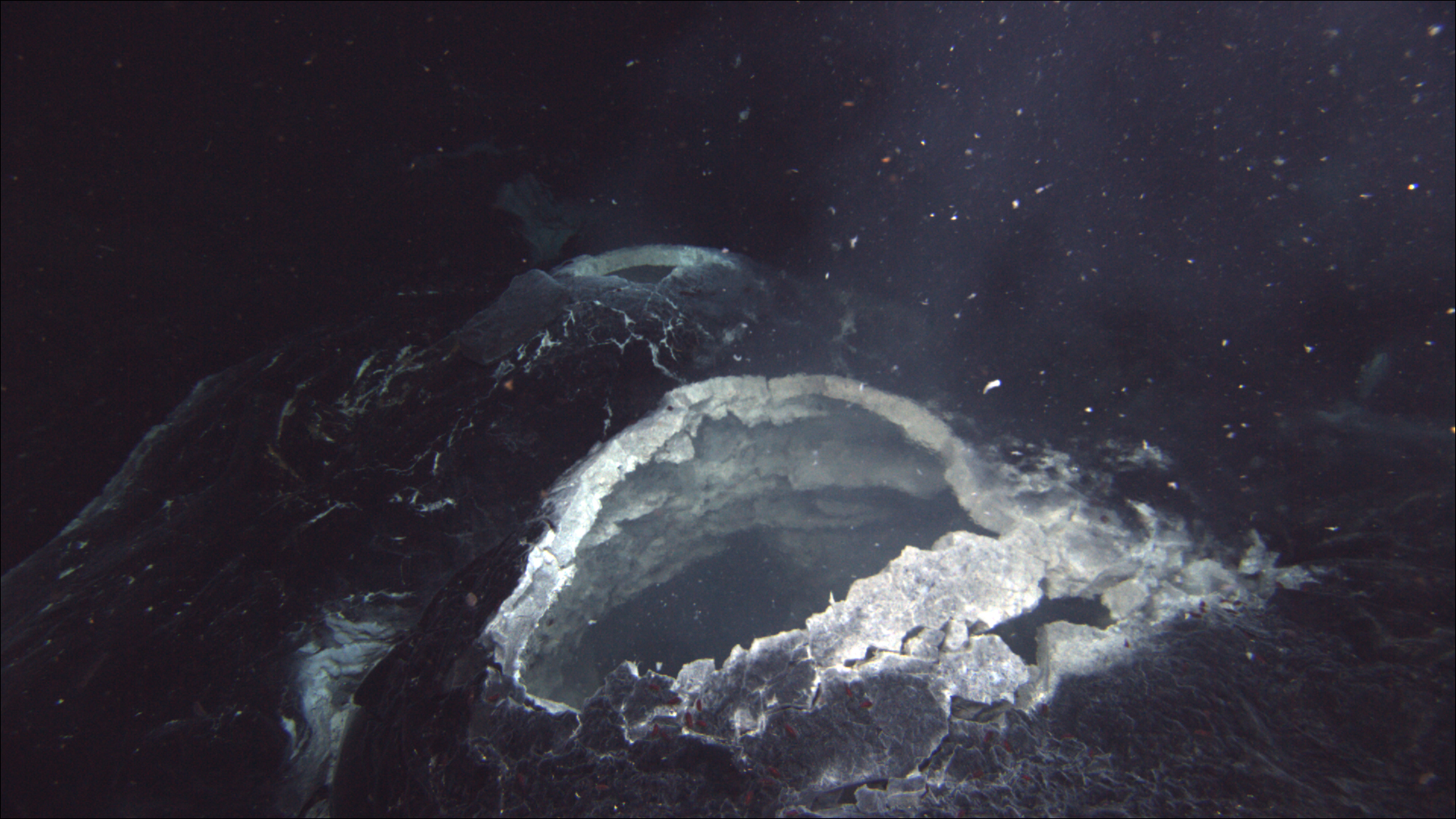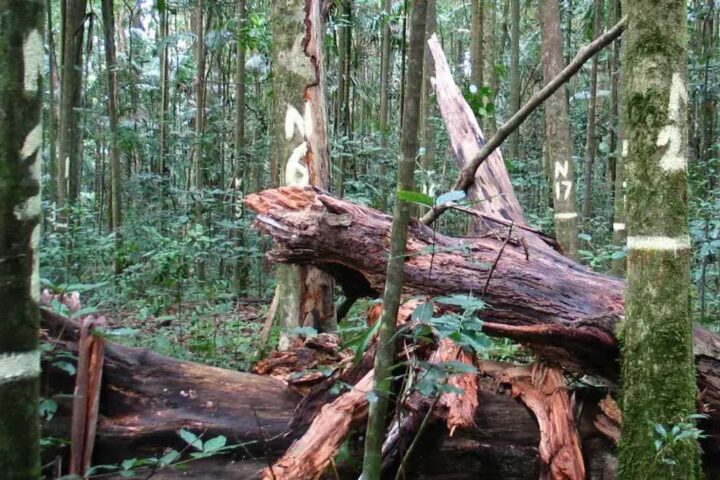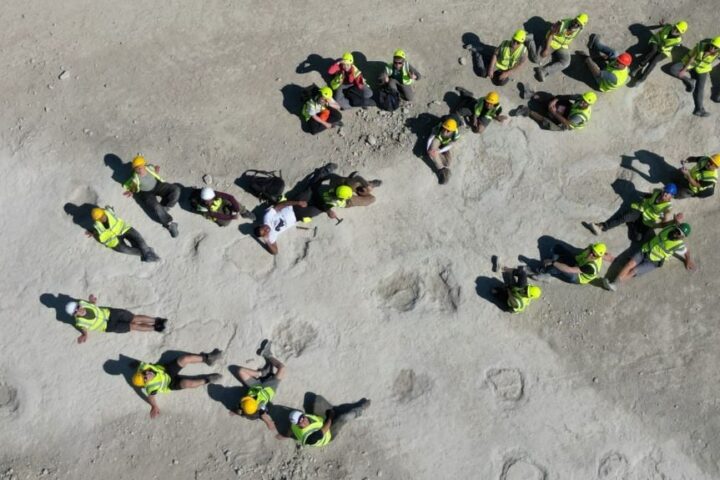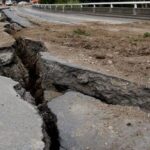Three hundred miles off Oregon’s coast, a submarine volcano is swelling with magma. Scientists monitoring Axial Seamount have recorded more than 1,000 earthquakes per day during late March and early April 2025, signaling that this underwater giant is preparing to erupt for the first time since 2015.
“It’s at or almost at that inflation threshold where it erupted last time. So we think it’s ready to erupt,” explains Bill Chadwick, a volcanologist and research professor at Oregon State University who’s been studying the volcano for 30 years.
Nature’s Underwater Laboratory
Sitting nearly a mile deep in the Pacific Ocean, Axial Seamount offers scientists an unmatched opportunity to study volcanic processes in real time. What makes this volcano particularly special is its location at the intersection of two major geological features: a hotspot where molten rock rises from Earth’s mantle, and the Juan de Fuca Ridge, where two massive tectonic plates (the Pacific and Juan de Fuca) are constantly spreading apart.
“It’s a genuine hotspot, and the volcano itself is quite large, rising about 3,600 feet above the seafloor,” notes William Wilcock, a marine geophysicist at the University of Washington. “The summit, bisected by the Juan de Fuca Ridge, is marked by a large caldera where the magma chamber has collapsed during multiple eruptions.”
This unique positioning makes Axial the most active submarine volcano in the northeast Pacific, having erupted in 1998, 2011, and 2015.
Real-Time Volcanic Monitoring
Thanks to the Ocean Observatories Initiative’s Regional Cabled Array (RCA), a network of underwater cables spanning 300 miles from the Oregon coast to Axial’s summit, scientists have unprecedented access to volcanic data. This $220 million system, operated by the University of Washington, delivers real-time information from 150 instruments monitoring everything from seismic activity to seafloor deformation.
“It’s probably the most well-monitored submarine volcano on the planet,” Chadwick says.
The data shows a clear pattern: between eruptions, the seafloor gradually rises as magma accumulates—much like a balloon inflating. Current measurements indicate the seafloor has inflated more than 20 cm (7.9 inches) in recent months and has reached approximately 90-95% of the height observed before the 2015 eruption.
Similar Posts
Forecasting the Next Eruption
Scientists currently project the next eruption will occur before the end of 2025, with Chadwick estimating about 50% certainty. When it happens, the event will trigger around 10,000 earthquakes in a single day as magma forces its way to the surface.
“The first sign of an eruption is a sharp increase in the number of earthquakes around the volcano, caused by magma moving toward the surface,” explains Wilcock. “That period lasts about an hour, and then the magma reaches the surface.”
Unlike explosive land volcanoes, Axial is a shield volcano that will ooze lava across the seafloor, potentially creating flows up to 450 feet thick and extending 25 miles along the ocean bottom. The eruption will continue slowly for about a month.
Interestingly, scientists have noticed that Axial’s eruptions tend to occur between January and April. “I don’t think we fully understand why that is, but it may be related to the gravitational forces from the moon influencing the volcano,” suggests Wilcock.
An Extreme Ecosystem Reset
While the eruption poses no danger to coastal communities—it’s too deep and too far offshore to cause tsunamis or be noticed on land—it will dramatically impact the unique ecosystem that thrives in this extreme environment.
Axial’s caldera hosts three major hydrothermal vent fields (CHASM, ASHES, and CASTLE) where superheated, mineral-rich water up to 700°F creates towering “chimneys.” These vents support remarkable communities of organisms that don’t rely on sunlight but instead harness chemical energy from the Earth.
“Most of the seafloor is relatively plain,” says Deborah Kelley, a marine geologist at the University of Washington and director of the RCA. “But at hydrothermal vents, you have this incredible abundance of life.”
The volcanic eruption will temporarily obliterate these communities as lava flows cover the vents. However, one of the most surprising discoveries is how quickly life returns.
“In 2011, we saw one of the venting areas become completely covered in lava flows,” Kelley explains. “It wiped everything out. But what’s fascinating is that when we came back three months later, there were animals and bacteria colonizing the area again.”
Snowblower Vents: Windows into the Subsurface
Following eruptions, scientists observe a unique phenomenon called “snowblower vents.” These temporary features expel plumes of white, flocculent material containing billions of microbes and their waste products.
“These snowblowers are characterized by the large quantity of white floc expelled from the seafloor following eruptions,” explains Julie Meyer, a marine microbiologist who has studied these features. The dominant microbes in these vents are sulfur-oxidizing Epsilonproteobacteria and thermophilic Methanococcales archaea—organisms that normally live deeper in the seafloor but are flushed out during eruptions.
This microbial community includes organisms like Sulfurovum and Sulfurimonas that thrive in high-sulfide environments, alongside 15 distinct microbial taxa that form the base of these chemosynthetic food webs.
The presence of these specialized microbes provides evidence that the blooms are seeded by subseafloor communities rather than from microbes in bottom seawater, giving scientists a rare glimpse into otherwise inaccessible microbial habitats.
Broader Scientific Implications
Axial Seamount functions as a natural laboratory for improving volcanic forecasting techniques that could be applied to more hazardous land volcanoes.
“If you can develop a model for how this works at Axial, it gives us a starting point that we can apply elsewhere, and with a few tweaks, we can begin working on forecasts of other volcanoes,” says Michael Poland, a research geophysicist at the U.S. Geological Survey’s Cascades Volcano Observatory.
The next eruption will be particularly significant because researchers plan to livestream it—something never done before for an underwater volcanic eruption.
“Three-quarters of all volcanic activity on Earth takes place at mid-ocean spreading centers,” Kelley notes. “But people have never directly witnessed an eruption along this mountain chain, so we still have a lot of unanswered questions.”
Resource Implications
Beyond pure scientific interest, the hydrothermal vents at Axial sequester metal-rich sulfide minerals such as chalcopyrite and sphalerite, analogous to valuable mineral deposits found on land. While no commercial mining occurs at Axial, studying these deposits informs debates about sustainable deep-sea mining.
The eruption will also release dissolved CO₂ and SO₂ into deep water, providing data to improve global carbon and sulfur cycle models.
Looking Forward: What We Can Learn
The impending eruption of Axial Seamount serves as a reminder that Earth’s most powerful forces often work beyond our sight. This underwater volcano offers scientists an unprecedented opportunity to study natural processes safely, without risk to human populations.
For those interested in following Axial’s activity, the Ocean Observatories Initiative provides public access to real-time data through their website. Citizens can monitor earthquake activity, watch live video feeds from the seafloor, and potentially witness geological history as it unfolds.

As we wait for Axial’s next chapter, it’s worth reflecting on what these deep-sea processes teach us: beneath apparent stability lies constant change, hidden systems can impact visible ones, and life finds ways to persist and adapt in even the most extreme environments.
With continued investment in ocean observatories and open-data platforms, future eruptions—whether beneath waves or on land—may become less surprising and more anticipated, fostering preparedness and resilience for communities worldwide.


















